Traditional Iñupiat dancers perform at Nuiqsut's Trapper School during a gathering for visiting Alaska congressional members. The school's new gymnasium, funded by oil revenue, hosts both cultural events and community meetings. (Photo: Jennifer Wybieracki)
As Oil Flows, An Arctic Village Adapts
As development brings in millions in revenues, new jobs and infrastructure, Iñupiat leaders work to protect their health and hunting grounds — while building a future on their own terms.
Story and photography by Jennifer Wybieracki
This story was produced as part of the Pulitzer Center 2024 Campus Consortium Reporting fellowship program.
NUIQSUT, Alaska — On a summer evening last August, the gravel roads led residents toward Nuiqsut’s Trapper School for an Iñupiat ceremonial dance. The village of just over 500 welcomed legislators from across Alaska, a week before the state’s primary election.
Wooden bleachers in the school’s new gymnasium, paid for with oil money, were crowded with excited locals sitting behind the state congressmen filling in the first two rows.
Performers sat in the center of the gym, with the men in the front row wearing green regalia, and women, wearing pink, filed into the second and third rows. Each dance told a unique story. One performed by the village’s young boys was about fighting your enemy. Each pair of boys mimicked punches and jabs to the beat of drums, but by the end of the dance, they shook hands, stronger as a pair.
The legislators were invited to join in for the very last dance, stomping to the beat of the drum alongside residents from the village of Nuiqsut. In the front row, Dora Leavitt recorded it all on her phone. Watching the scene unfold, she later said she has always been proud of her culture’s adaptability.
Leavitt, 59, and her family helped establish Nuiqsut in 1973, when they moved 150 miles southeast of Utqiaġvik toward the Colville River Delta. She was five years old when they arrived, living in tents for over a year. “We even had school in tents,” she said.
Their relocation was the result of the Alaska Native Claims Settlement Act (ANCSA) of 1971, which returned ownership of 44 million acres of land to Alaska’s Indigenous communities. ANCSA also established Alaska Native Regional Corporations owned by enrolled Alaska Native shareholders, giving them the power to lease land to oil companies for profit. Leavitt’s village was officially incorporated in 1975 with the Alaska Native Corporation, Kuukpik, where she and her brothers are board members.
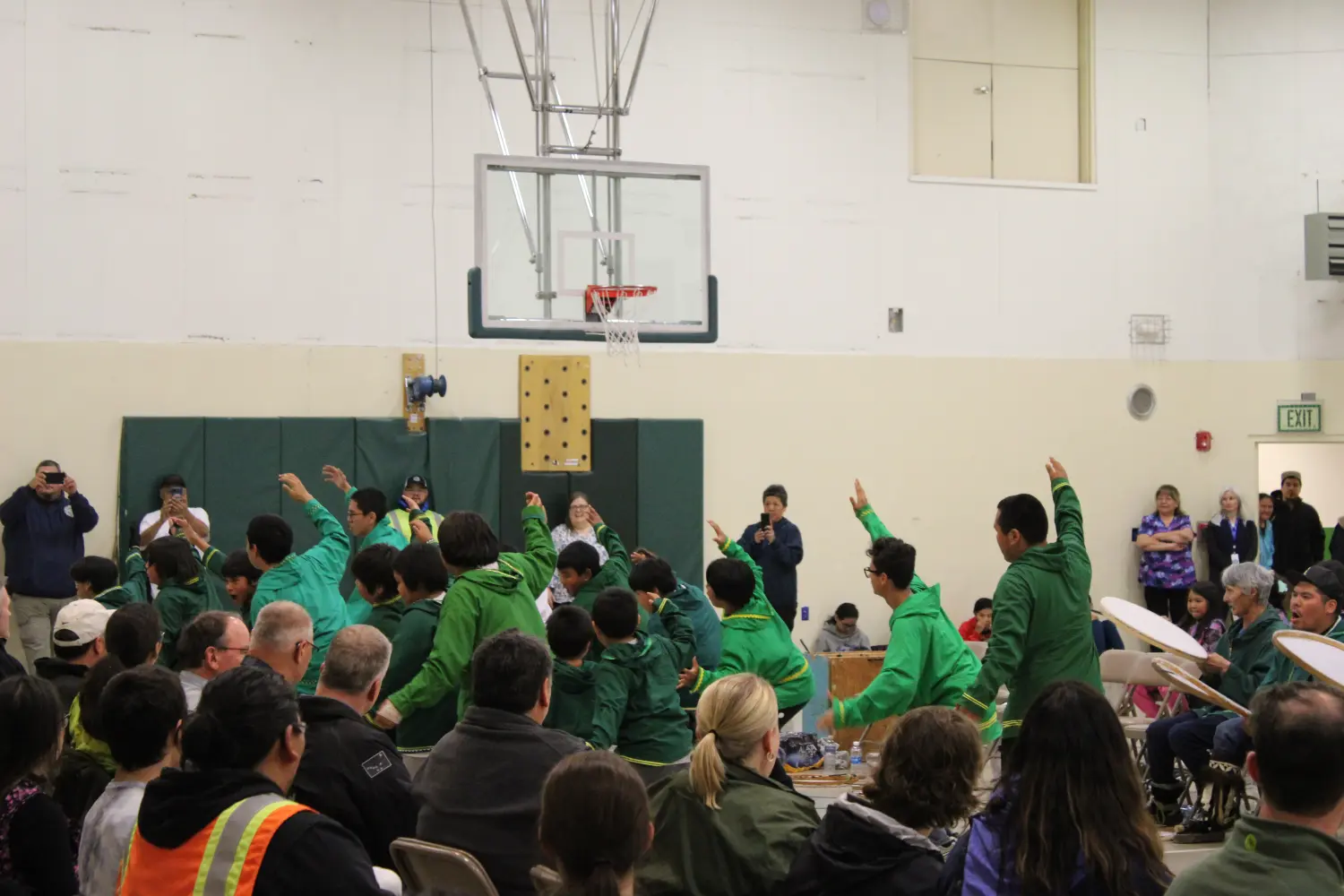
Young boys perform a traditional Iñupiat dance about conflict and resolution at Nuiqsut's Trapper School gymnasium, while Dora Leavitt (in dark clothing) captures the moment on her phone. (Photo: Jennifer Wybieracki)
Before ANCSA, Leavitt’s parents knew this land only as hunting and fishing grounds in the winter months. When the family first moved to Nuiqsut, her parents brought the family on a two-week boating trip to make sure they knew the traditional place-names. “They let us learn the channel,” Leavitt said.
Education was always very important to Leavitt’s mother, Ruth Nukapigak, because she knew the Western world was quickly coming to their village. Her older brothers were among the generation sent to U.S. Indian boarding schools, forcibly removed from their community and punished for speaking their Native language and practicing their cultural traditions. These schools were implementing cultural genocide with the stated purpose to “Kill the Indian, Save the Man.”
While Leavitt said her brothers have symptoms of post-traumatic stress disorder (PTSD), they’ve turned their boarding school experiences into a form of resilience that’s an asset in their current roles as leaders of Kuukpik Corporation. “We're gonna work with what was given to us,” Leavitt said. “I always see it as God turned it around for our good.”
When oil companies first arrived in the North Slope, many residents opposed the development because nobody knew what was going to happen. “We knew we couldn't stop industry,” Leavitt said. “The high demand for oil was coming from our region.” Her father, Edward Nukapigak, was a whaling captain and community leader who always knew that if they said no to industry, it wouldn't stop them from coming; it would just prevent them from being a part of the conversation. “We need to sit at the table and work with them,” he would say.
Her mother shared similar views, seeing industrial development as a path out of hardship. “She used to tell stories about how they went to sleep cold, and woke up cold,” Leavitt said.
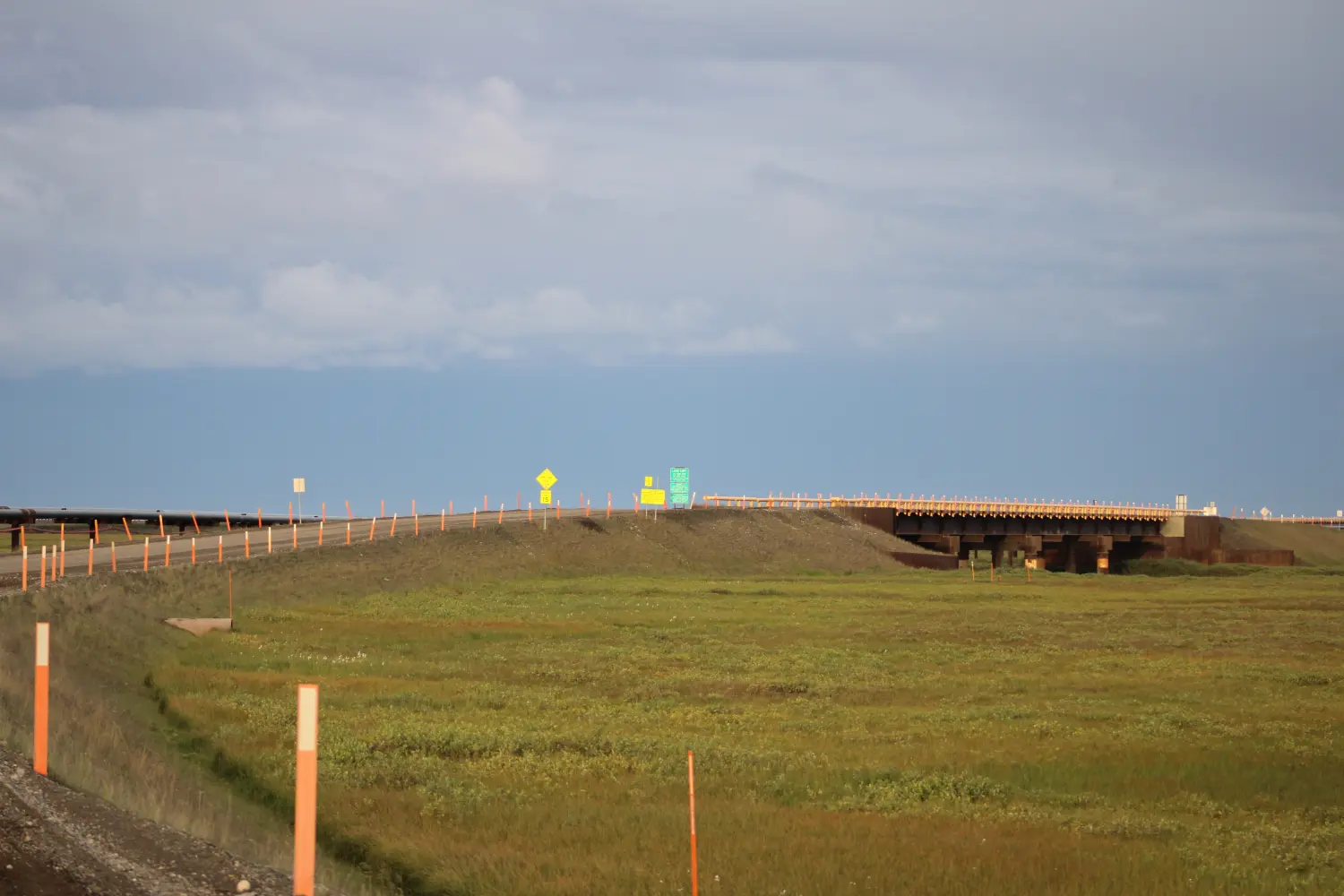
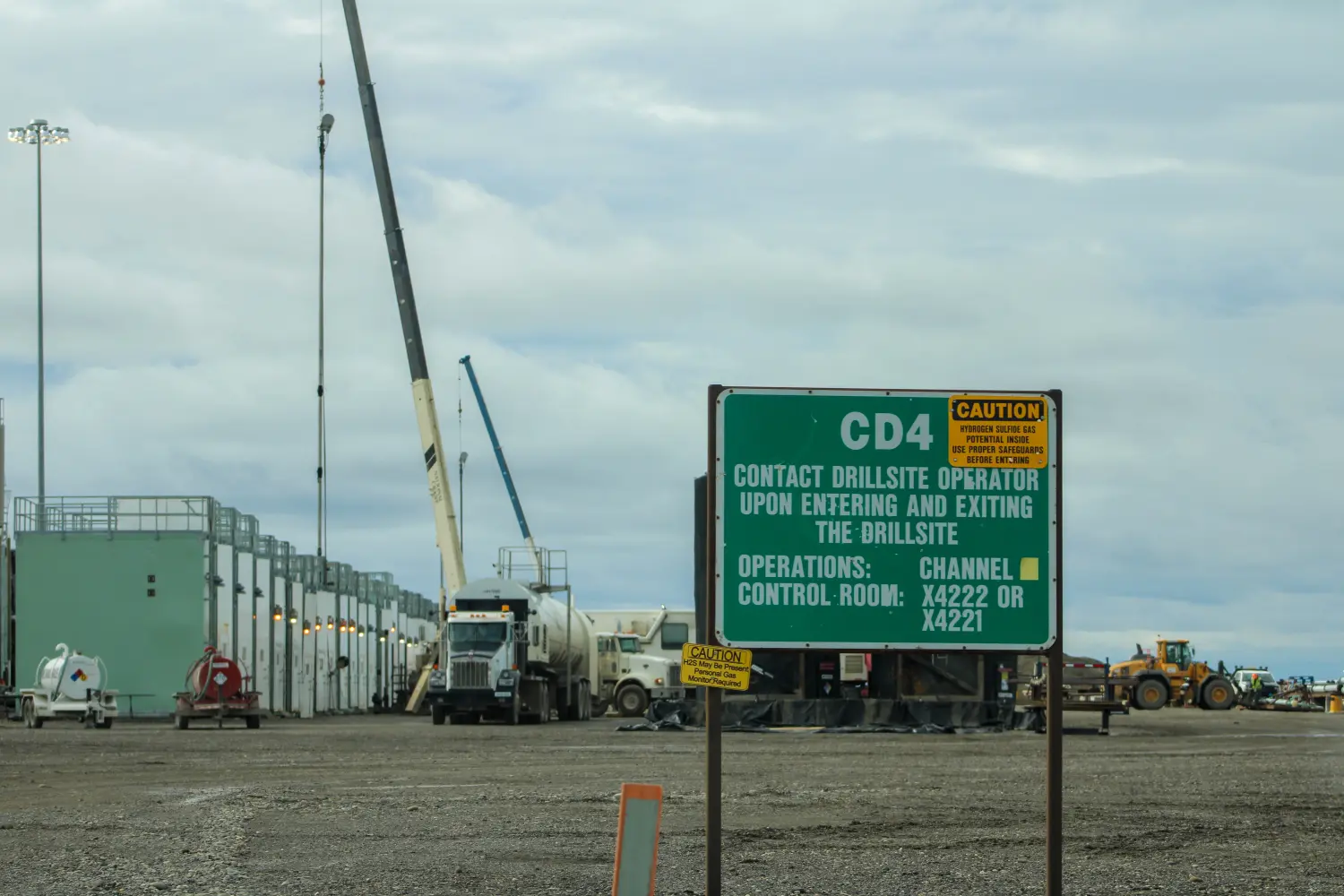
Oil infrastructure near Nuiqsut, Alaska shows the community's changing landscape: A gravel road built for development (left) and the CD4 drill site (right), representing both economic opportunities and environmental challenges for the Indigenous community. (Photos: Jennifer Wybieracki)
Today, the community has heated homes and clean running water. As construction on the Willow project began, Kuukpik Corporation secured business opportunities for its shareholders, including a contract to move and place gravel for the roads and a staging area on the tribe’s land that will generate lease revenue for the village. More than 20 Kuukpik shareholders won jobs as subsistence representatives and ice road monitors, and the oil industry also provides direct job opportunities — ConocoPhillips employs Leavitt’s son as a marine mammal observer. But she emphasizes how they will always return to subsistence hunting, “because that's something that is dear to us,” she said. “We make sure we live by the calendar of the animals that come up here.”
The progress comes with some loss. Infrastructure has now spread across the tundra, sometimes encroaching on sensitive subsistence areas. “For instance, CD-5 [an Alpine drill pad] was a place where the caribou had come. We would see them by the thousands. We don't see that anymore. It's just a spider web of pipelines. We’ve had to find other places of subsistence, other than where my parents used to hunt,” Leavitt said.
Industry is also causing a loss of cultural connection to the land. “We're losing the real names of each place that industry has put infrastructure,” Leavitt said. “Today, you're going to see places like Alpine, CD-5, CD-4, but there is a place-name for every one of them that our kids don't know anymore.”
Oil development impacts the animals they hunt, and by extension, their cultural identity. Nuiqsut residents like the previous mayor of Nuiqsut, Rosemary Ahtuangaruak, see how oil drilling has brought great prosperity to Nuiqsut, but now worry that the village is facing a frightening future.
Ahtuangaruak, 60, drives past those same drill pads to a specific subsistence ramp in the middle of the oil field. She puts her truck in park and looks off toward the horizon. “I like to come and just sit this way,” Ahtuangaruak said. “You put all the changes behind, and you feel like you're in the natural environment for a bit.” This is one of the last places where she can’t see the development rising on the horizon.
When she was a community health aide, Ahtuangaruak became an unwavering advocate against further industrialization of the Alaskan Arctic as she began witnessing her community’s respiratory health change drastically since oil and gas drilling operations began, she said.
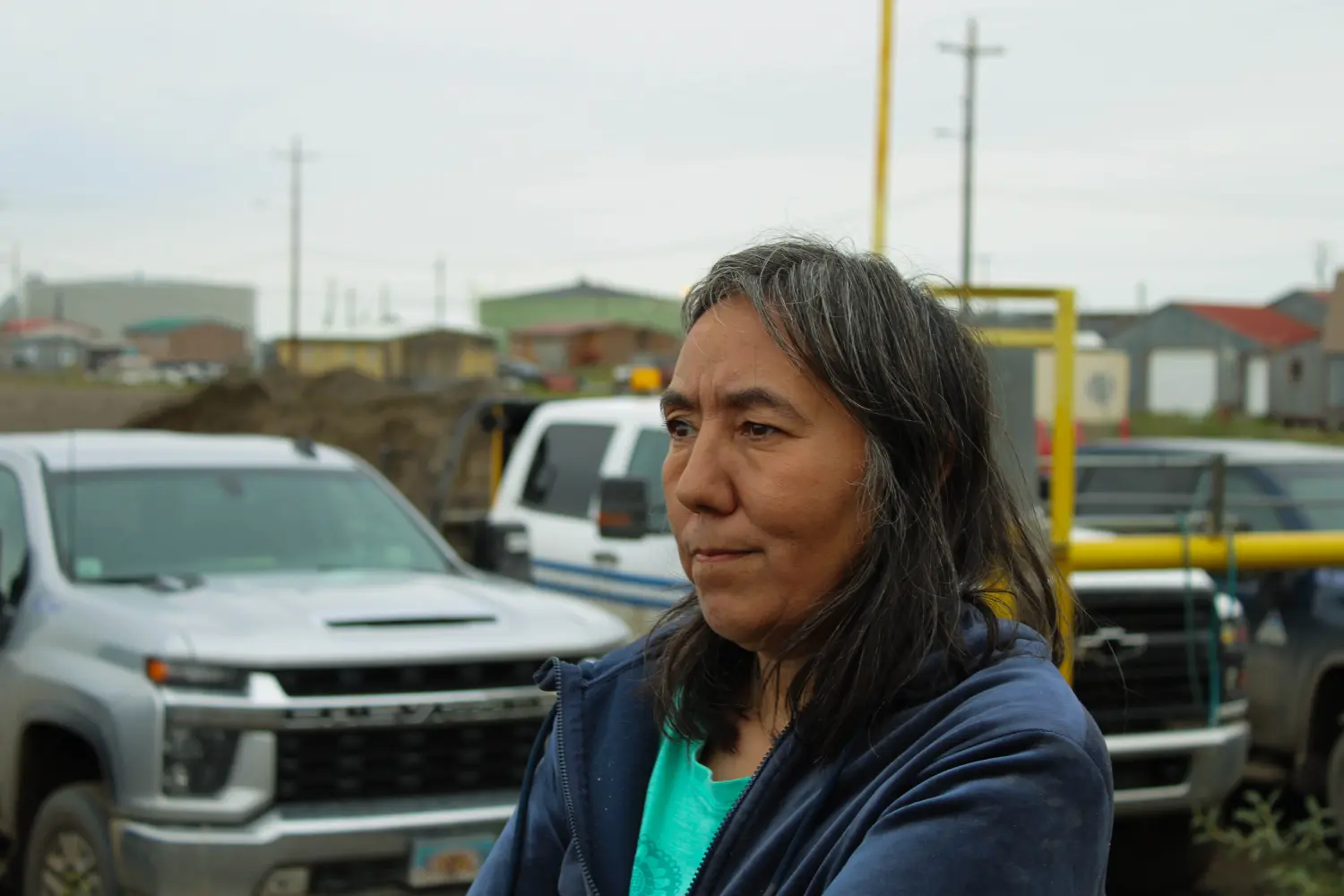
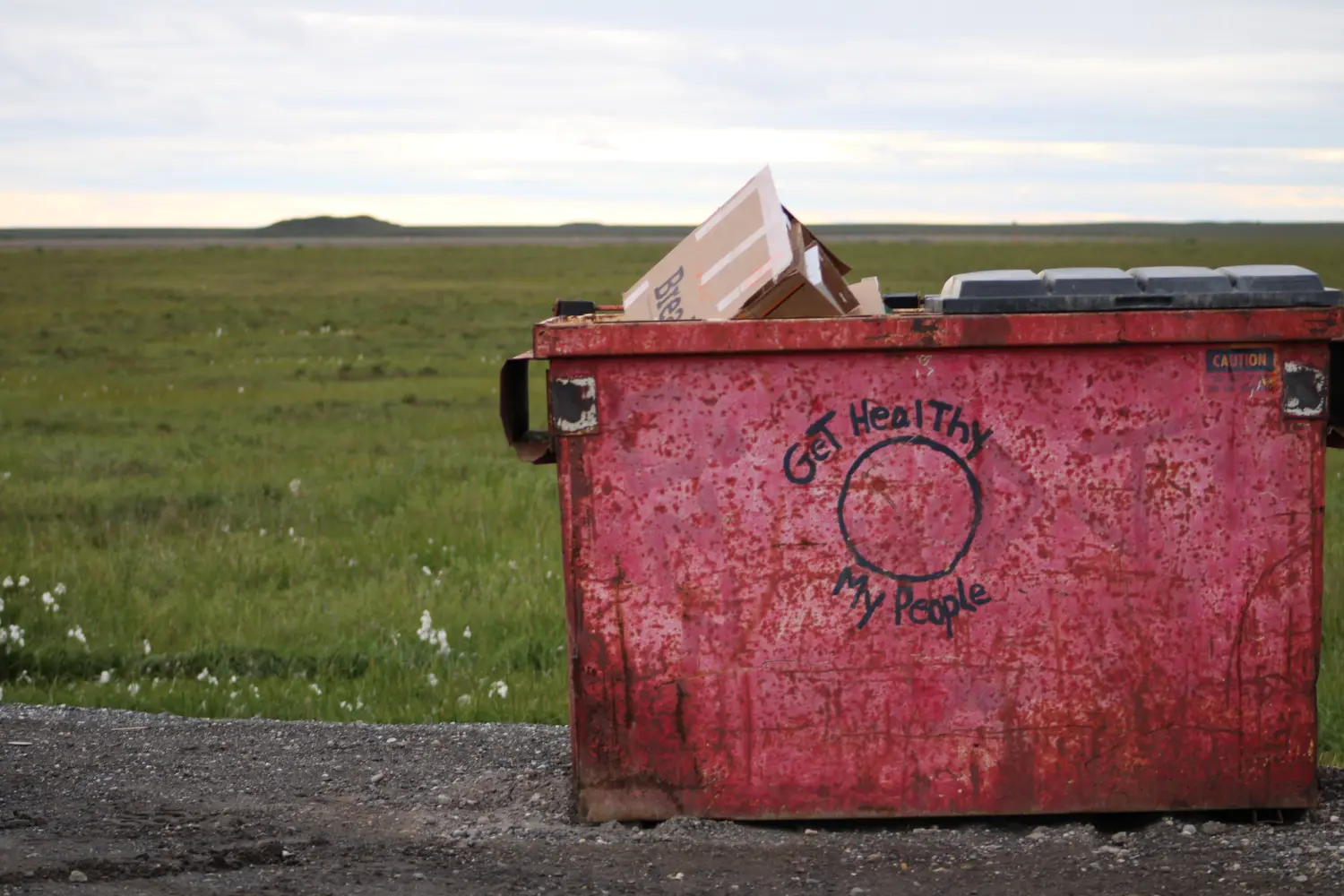
Former Nuiqsut Mayor Rosemary Ahtuangaruak (right) has witnessed her community's changing health patterns since oil development began. A dumpster near the oil fields (left) bears graffiti reading "Get healthy my people," reflecting local concerns about industrial impacts. (Photos: Jennifer Wybieracki)
Within her first two years of working as a health aide in Nuiqsut, she was treating 20 people for respiratory illness. By the end of her time working at the clinic in 2000, she had more than 60 people needing medicine to help them breathe, a drastic increase for a village with fewer than 500 residents. She also saw an increase in thyroid disorders, and neurological disorders.
During debates over the Willow Project, she spoke to media outlets about the alarming consequences of burning 586 million barrels of oil over the project’s three-decade lifespan, the equivalent of 260 million metric tons of carbon dioxide. The Arctic is warming four times faster than the rest of the world, and soil temperatures at Prudhoe Bay, 60 miles east of her home, have already warmed by about 6 degrees Fahrenheit since the 1970s. This phenomenon is known as Arctic amplification in the academic community. Arctic communities will be among the first to suffer the effects of climate change, and it will be the most severe. But they can’t escape oil.
Alaska is a petro-state, which means the entire state depends on income from oil development. The state has tied almost 90% of its revenue to a nonrenewable resource that has been in decline, which started in 1980 when Alaska eliminated its state income tax during the oil boom.
In early 2025, declaring "drill, baby, drill" as its rallying cry, the Trump administration intensified Alaska's oil dependency through executive orders and Interior Department directives to open more than 13 million acres of Arctic wilderness to drilling. The policy changes target the Western Arctic Special Areas in the National Petroleum Reserve-Alaska and the Arctic National Wildlife Refuge, pushing development even closer to communities like Nuisqut.
“At first glance, a lot of people think [not having taxes] is fantastic,” said Dr. Amy Lauren Lovecraft, director for the Center for Arctic Policy Studies at the University of Alaska Fairbanks. But when a state pays taxes, residents pay for the government and have the capacity to influence what the government should do with taxpayer dollars.
“Alaska operates in a system that forces through path dependency, and everything about the state government is set up to exploit oil and gas,” Lovecraft said. This path dependency makes it challenging to transition Alaska's economy and policies toward renewable energy and climate change mitigation, even as the impacts of climate change become more severe in the state.
“Oil will never go away here, and the biggest reason you're seeing right now is the military. You can't run fighter jets and tanks off of solar power,” Lovecraft said. Even so, she does think there’s a way for Alaska to become decarbonized within itself. Norway, an oil producing state, has a sovereign wealth fund just like Alaska. But Norway uses its sovereign wealth fund to decarbonize and to develop Norway for the future.
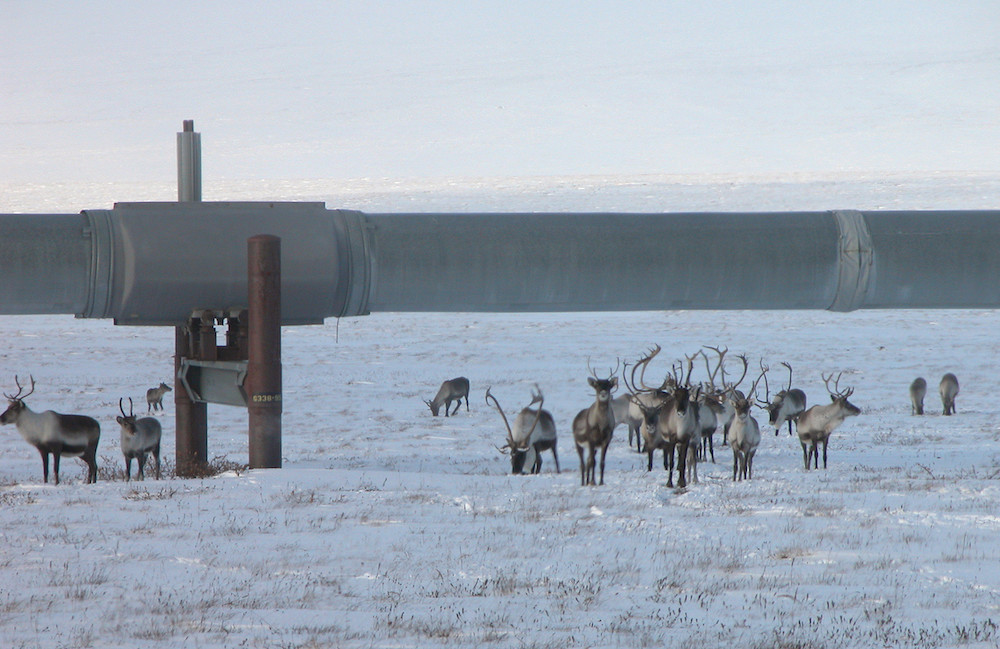
Caribou graze beneath the Trans-Alaska Pipeline, where a seven-foot clearance requirement, negotiated by Nuiqsut leaders, allows wildlife to pass freely under oil infrastructure. (Photo: Tim Craig, BLM)
The dependency on oil is far deeper in Nuiqsut. Kuupik’s operating revenue, the money it uses to provide services and dividends to its shareholders, doubled to $97.6 million in 2023, from $47.6 million in 2022. According to the corporation’s Management Letter to Shareholders, the increase marked “a year of consistent oil prices resulting in steady royalty revenue,” and “is an indicator that we are seeing the leading edge of activity from Pikka and Willow.” The community also depends on stipends they get through ANCSA and donations from companies like ConocoPhillips pay for school renovations and class field trips.
Ahtuangaruak is becoming more frustrated with every new project passed, because she fears for the health of her community.
Despite such concerns, Nuiqsut continues to push back, secure concessions from developers and regain control of its traditional lands. When ConocoPhillips wanted to build its pipes hovering only five feet above the tundra, the community argued the caribou wouldn’t have been able to pass underneath. “The new rule is seven feet,” Leavitt said.
“We haven't always seen eye to eye, but we're starting to work together. We know now we can't stop industry, but this is what Kuukpik is always good at, is trying to minimize the impacts, trying to minimize footprint on Kuukpik land,” Leavitt said. “Our people are reserved, but they're forgiving, just trying to live off this land and adapting to the Western world.”
Jenn Wybieracki is a recent M.A. graduate of journalism from Syracuse University’s S.I Newhouse School of Public Communications and a 2024 reporting fellow with the Pulitzer Center for Crisis Reporting. Before starting graduate school, she studied conservation biology and creative environmental writing.
